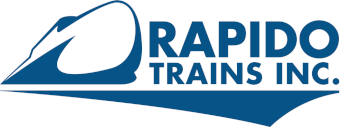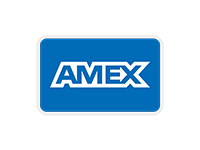By Josh Anderchek, with thanks to Dan Dell'Unto
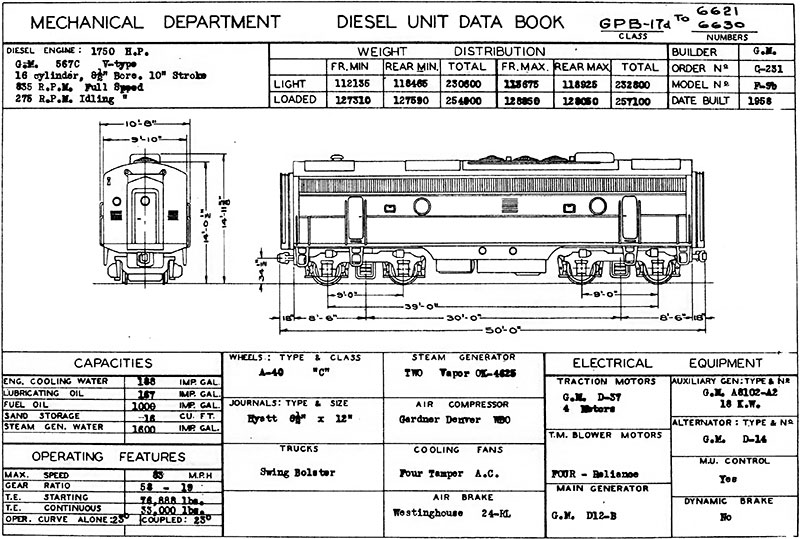
Canadian National GPB-17d Data Sheet.
Much like the unique FP9 that was produced by Rapido a number of years ago, and the current production of the FP7, many will ask "Do we really need another B-unit?" or "What makes this one different from the others?" Well, the GMD London-built F7B and F9B differed from their EMD La Grange-built counterparts and have their own unique attributes. First and foremost, let's clear the air. There is no such thing as an FP7B or an FP9B. That's a misnomer. Whether it had a steam generator or not, it was simply an F7B or an F9B. The only difference in name would've been the internal classification number, which varied from railway to railway. The same "rule" applied to the FP7s and FP9s too - whether they had a steam generator or not - as they were a distinctly different locomotive than their shorter F7 and F9 counterparts.
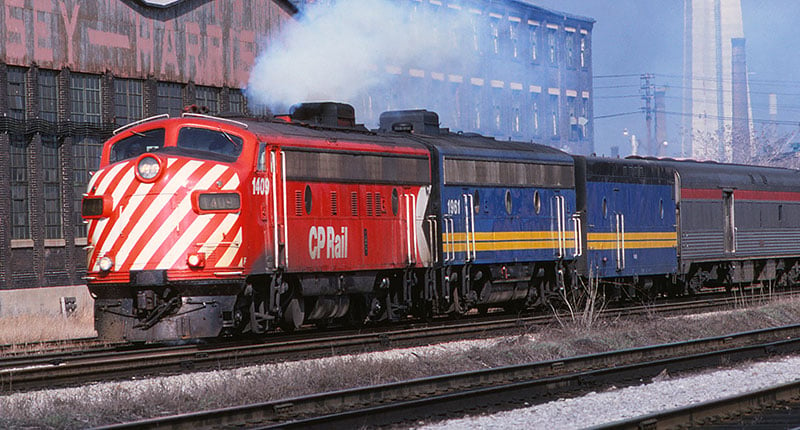
The CP heritage can't be hidden under blue paint as F7B 1961 (ex CP 1900) assists FP9A 1409 with The Canadian leaving Toronto on April 15th, 1979. Kaluza-Mueller Collection.
Canadian Pacific
Beginning in 1951, Canadian Pacific took delivery of their first F7Bs, numbers 4424-4437, class DFB-15c. Of the first batch of 14 units, the first 10 (4424-4433) were not equipped with steam generators, while the later batch of 4 (4434-4437) were so equipped. These units were followed in 1952 by an additional 8 steam-generator equipped F7Bs (4438-4445) and 3 non-steam F7Bs (4446-4448). Finally in 1953, CP took delivery of 4 more F7Bs, numbers 4459-4462, which were not equipped with steam generators. However, as a result of the transition to the F9B production at GMD, the last order came equipped with a 48" dynamic brake fan rather than the 36" fans on the previous F7Bs.
Finally in 1954, with the impending launch of The Canadian the following year, CP took delivery of eight F9Bs (numbers 1900-1907) to complement their order of 11 FP9As (1405-1415) purchased at the same time. These new units came equipped with steam generators and 48" dynamic brake fans, being essentially identical externally to their earlier F7B cousins, especially the later 1953 batch. At the same time, CP renumbered their steam generator-equipped F7Bs from 4434-4445 to 1908-1919 respectively to match the numbering of the incoming F9B units, and to streamline the numbering of the fleet intended for use on passenger trains. They were also upgraded from 65 mph to 89 mph gearing at the same time.
In the later years when passenger service began to dwindle, CP reverted the numbering of their steam-generator equipped F7Bs back to 4434-4445, regeared them back to 65 mph, and put them back into dual freight/passenger service for greater flexibility. None of the F7Bs went on to VIA Rail Canada in the late 70s, as they had all lost their steam generators by this point. While some were traded in to GMD in 1965 towards new GP35s, most were retired from service by 1983. Two exceptions to this were 4445 and 4462, which became slug units wearing numbers 6800/6801 and later 1018/1019 respectively before ultimately being sold in 1999, 16 years after the last F7Bs were retired. For the F9B's, the remaining 6 units (1902 and 1906 were retired due to wreck damage) were renumbered to 4473-4478 in 1971 and remained in dual freight-passenger service but with reduced 65 mph gearing. Then in 1979, the 5 units still equipped with steam generators were renumbered 1961-1965 for transfer to VIA Rail. Of the 5 units transferred to VIA (renumbered by CP to 1961-1965, although 1961 was briefly numbered 1931 until a numbering conflict was discovered), most remained in CP Rail paint but were gradually repainted over time. In the early 80's, three units were extensively rebuilt at CN's Pointe Ste. Charles shops and renumbered 6651-6653. Units 1961 and 1965 were subsequently retired and not part of the rebuild.
Canadian Pacific F7B Total Built: 29 Units:
| Fleet No. | Class | Build Date | Dynamic Brake | Steam Generator |
|---|---|---|---|---|
| 4424-4433 | DFB-15c | 1951 | 36" Fan | No |
| 4434-4437(1) | DFB-15c(1) | 1951 | 36" Fan | Yes |
| 4438-4445(1) | DFB-15d(1) | 1952 | 36" Fan | Yes |
| 4446-4448 | DFB-15d | 1952 | 36" Fan | No |
| 4459-4462 | DFB-15e | 1953 | 48" Fan | No |
(1)In 1954, F7Bs 4434-4437 were renumbered 1908-1911 and reclassed as DPB-15a, while F7Bs 4438-4445 were renumbered 1912-1919 and reclassed as DPB-15b. In 1965-66, these locomotives were renumbered back to their 4400-series with the exception of 1910 (ex 4436) which wrecked in 1962 and 1908 which wasn't renumbered back to 4434 until 1971.
Canadian Pacific F9B Total Built: 8 Units:
| Fleet No. | Class | Build Date | Dynamic Brake | Steam Generator |
|---|---|---|---|---|
| 1900-1907(2, 3) | DPB-17a | 1954 | 48" Fan | Yes |
(2)In 1971, 1900-1907 (less 1902 and 1906 due to wrecks) were renumbered to 4473-4478 respectively. The remaining units were then renumbered to 1961-1965 and transferred to VIA Rail in 1979. 3 Of the six F9Bs remaining in 1979, 4476 was the only one no longer equipped with a steam generator. As a result, CP substituted steam-equipped RS10 8558 in its place when the F9B fleet was transferred to VIA Rail.

VIA Rail (ex CN) F9B 6611 in 1984. This is one of the original F9Bs (Class GPB-17a) built with "Laundry Chute" steam generator exhaust on the end, which at this point had been plated over and replaced with exhaust stacks on the roof. Kaluza-Mueller Collection.
Canadian National
Unlike Canadian Pacific, Canadian National got into purchasing B-units much earlier - in 1948 to be exact - when they took possession of a pair of F3(B) units, numbers 9001 and 9004, to go along with their F3A units received at the same time. To complement this earlier experiment, CN then purchased 16 F7Bs beginning in 1951 with numbers 9029-9047 (odd numbers), followed by 9053-9063 (odd numbers), of which the last unit was delivered in 1952.
Seeing the advantages of using B-units more in passenger service than in freight, CN placed various orders for steam-equipped F9Bs totaling 38 units, which were delivered between 1954 and 1958. CN's order made them the last carbody B-units built by either EMD or GMD. Beginning in 1954, CN received their first F9Bs, numbers 6600-6612 (classified as GPB-17a) and soon thereafter with 6613 (GPB-17b) in 1955. These were followed in 1957 by 6614-6620 (GPB-17c), and in 1958 by 6621-6630 (GPB-17d) and 6631-6637 (GPB-17e). All of CN's F9Bs came equipped with two steam generators, however none were equipped with dynamic brakes. Eventually CN rebuilt their GPB-17a class F9Bs to remove the "laundry chute" stacks on the end of the carbody with roof stacks similar to the rest of the fleet. While the as-delivered units (GPB-17c class and later) featured exhaust stacks with squared ends, the units modified by CN featured stacks with curved ends.
Along with some of their F7A fleet, ten CN F7B units were rebuilt by Transcona shops in the early 1970s as units 9190-9199, for continued freight service lasting into the late 80's.
When all CN passenger services were assumed by the newly created VIA Rail Canada in 1978, all but 4 of the original 38 F9Bs were transferred to the new crown corporation and kept their original numbers. Most were retired in the 1990s. Units that were not transferred to VIA Rail included 6600 (wrecked 1974), 6601 (wrecked 1973), 6608 (wrecked 1960) and 6609 (retired 1974).
Canadian National F9B Total Built: 38 Units:
| Fleet No. | Class | Build Date | Dynamic Brake | Steam Generator |
|---|---|---|---|---|
| 6600-6612 | GPB-17a | 1954-55 | 4 x 36" Fans | Yes, 2 units |
| 6613 | GPB-17b | 1955 | 4 x 36" Fans | Yes, 2 units |
| 6614-6620 | GPB-17c | 1957 | 4 x 36" Fans | Yes, 2 units |
| 6621-6630 | GPB-17d | 1958 | 4 x 36" Fans | Yes, 2 units |
| 6631-6637 | GPB-17e | 1958 | 2 x 48" Fans | Yes, 2 units |
SOME SPOTTING FEATURES OF THE GMD F7B AND F9B ARE SHOWN BELOW. Note that all of the details highlighted in these photos are included on the Rapido F7B and F9B models. Our locomotives will have details correct for each road number.
Top: CP F7B - Bottom: CP F9B
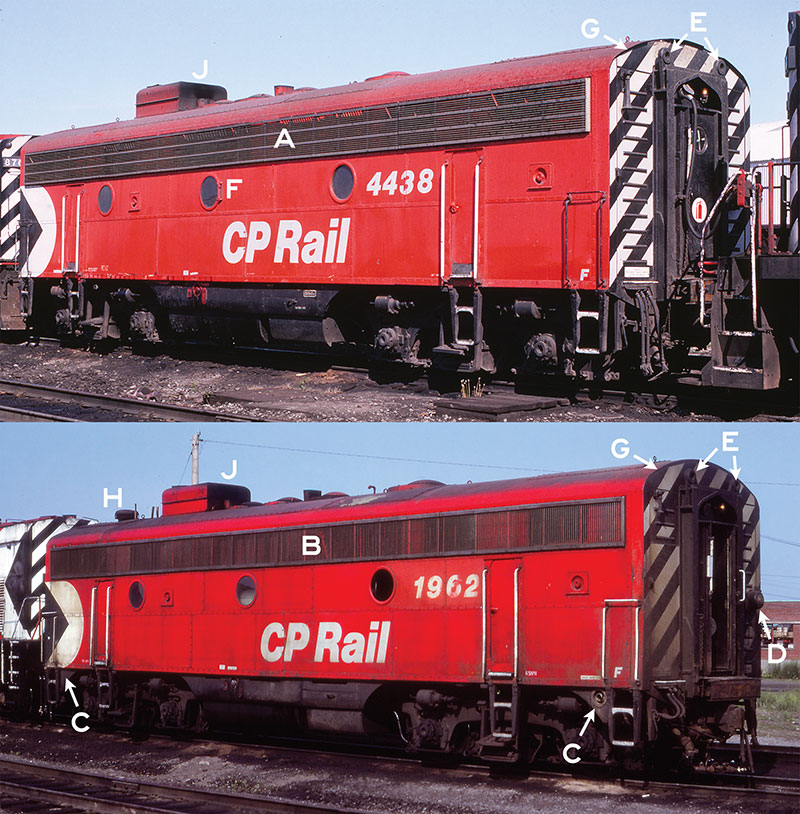
- A - Horizontal Grills
- B - "Canadian Farr" Grills
- C - Round Gusset Plates w/ Water Filler at the Forward end
- D - Low-mounted right-side switching light
- E - Lift Rings
- F - Hinge on centre Porthole (Hostler Controls, early F7Bs only)
- G - GMD-style roof overhang over ends
- H - Single Steam Generator in REAR of locomotive
- J - Tall Winterization Hatch
Prototype photos courtesy Dan Darnell and Kaluza-Mueller.
CN As-delivered F9B Detail Variations
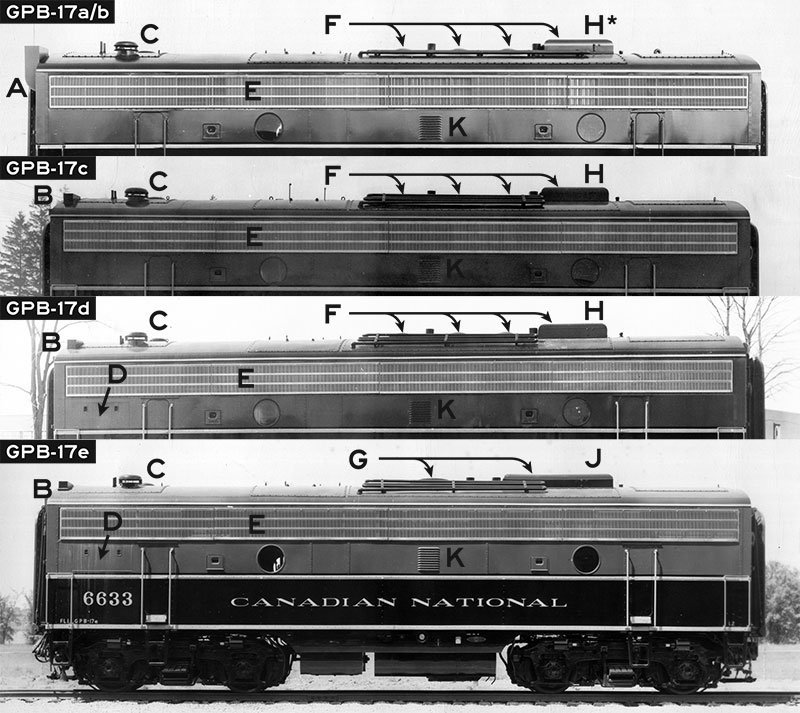
- A - "Laundry Chute" Steam Generator Exhaust
- B - Roof-mounted Steam Generator Exhaust
- C - Twin Steam Generators in FRONT of locomotive
- D - Battery Box (later retrofitted onto GPB-17a/b/c models)
- E - Farr (Vertical) Grills
- F - 4 x 36" Radiator Fans
- G - 2 x 48" Radiator Fans
- H - Small Winterization Hatch (Some GPB-17a later retrofitted with "Huge" hatch)
- J - Medium Winterization Hatch
- K - Louvres in place of Centre Porthole
Prototype photos courtesy CN Lines.
Left: CN - Right: CP
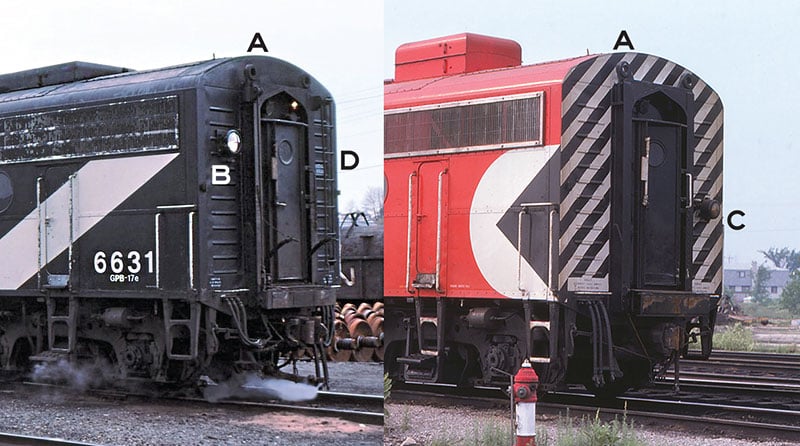
- A - GMD-style roof overhang over ends
- B - High-mounted left-side switching light
- C - Low-mounted right-side switching light
- D - End ladder
Prototype photos courtesy CNRPhotos.com and Kaluza-Mueller.
